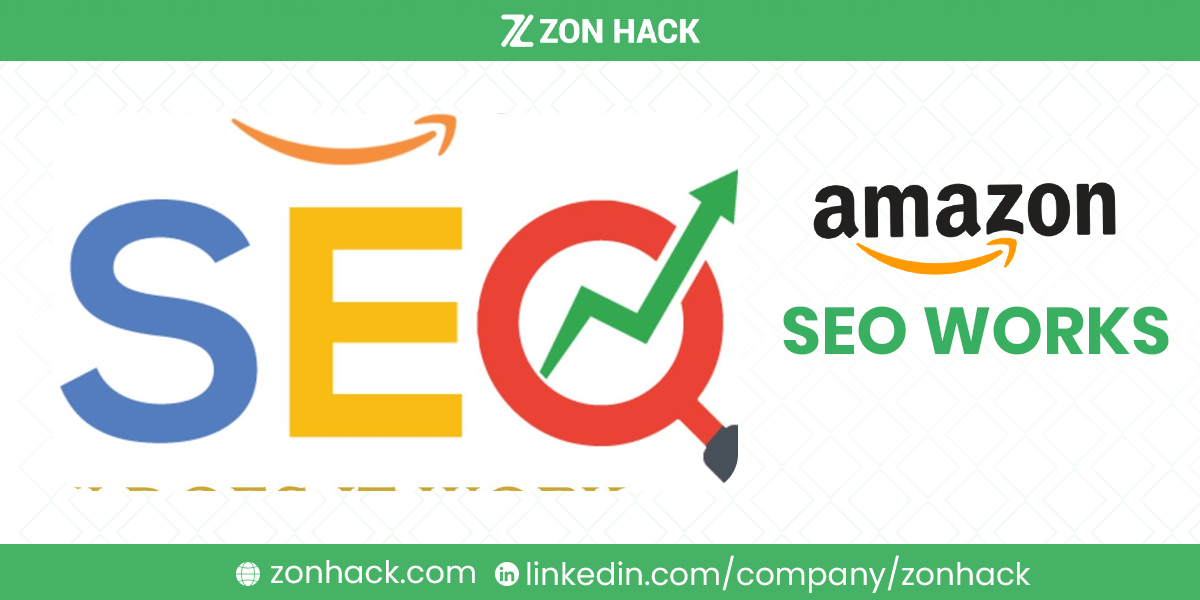In the vast and competitive marketplace of Amazon, visibility is everything. Amazon SEO, or Search Engine Optimization, is the process of optimizing product listings to rank higher in Amazon’s search results, which directly impacts visibility, organic traffic, and ultimately, sales. Unlike traditional SEO, which is focused on driving informational content to search engines like Google, Amazon SEO is sales-driven, tailored for sellers aiming to maximize conversions.
For sellers, understanding and mastering Amazon SEO means:
- Increased visibility for your products among millions of listings.
- Higher conversions due to optimized content that resonates with search intent.
- Improved brand presence, building trust and recognition over time.
Amazon SEO vs. Traditional SEO
While both Amazon and traditional SEO aim to optimize content for ranking, the platforms operate with distinct goals and ranking mechanisms. Amazon SEO is primarily sales-driven, designed to generate transactions. In contrast, traditional SEO focuses on information delivery and driving traffic to websites.
Key differences include:
- Platform-specific ranking factors: Amazon considers sales velocity, product performance, and customer behavior metrics as primary drivers of ranking, whereas traditional SEO relies on backlinks, domain authority, and content relevance.
- Intent-driven optimization: Amazon SEO aligns with transactional keywords (e.g., “buy noise-canceling headphones”), while traditional SEO may include informational queries like “how do noise-canceling headphones work?”
Amazon’s A10 Algorithm Deep Dive
Evolution from A9 to A10
Amazon’s A10 algorithm, introduced as an evolution of the A9 algorithm, prioritizes user satisfaction and purchase likelihood. This shift emphasizes performance metrics and relevance more than ever. While A9 heavily relied on keyword relevance and sales history, A10 integrates machine learning to evaluate a wider range of factors, including external traffic and customer behavior.
Key Ranking Factors
- Relevance Metrics: Optimizing product titles, descriptions, and backend search terms ensures listings match user queries accurately.
- Performance Metrics: Conversion rates, sales velocity, and inventory levels play a critical role in maintaining rank stability.
- Customer Behavior Signals: Metrics like click-through rate (CTR) and dwell time signal how engaging your listing is to shoppers.
- Sales Velocity Impact: A listing’s sales history can significantly influence its rank. Consistently strong sales indicate that a product is desirable, pushing it higher in search results.
Machine Learning Integration
Amazon’s machine learning capabilities allow the algorithm to adapt to real-time data, meaning that optimized listings must consistently meet evolving performance standards to stay competitive.
Product Listing Optimization Framework for Amazon
A product listing on Amazon serves as the first point of interaction with potential buyers. Optimizing this space requires a strategic approach to key components, including titles, descriptions, bullet points, and backend search terms.
Title Optimization
A product’s title is often the most visible part of the listing. Crafting a compelling, keyword-optimized title ensures your product is relevant to search queries while catching the shopper’s attention.
Best Practices:
- Keyword Placement: Place primary keywords at the beginning of the title for maximum visibility.
- Character Limit: Stay within the recommended 200-character limit while ensuring readability.
- Category-Specific Guidelines: Different product categories (e.g., electronics vs. apparel) have unique formatting needs. Adhering to these can improve ranking.
Common Mistakes to Avoid:
- Keyword stuffing, which can harm readability and turn away shoppers.
- Ignoring category-specific guidelines, leading to poor ranking or listing suppression.
Product Description Mastery
The product description offers a space to engage shoppers, showcase benefits, and incorporate keywords naturally. It’s not just about describing features but persuading buyers why your product is the best choice.
Tips for Effective Descriptions:
- Engage readers by emphasizing how the product solves their problems or enhances their lives.
- Use a conversational tone to establish trust and relatability.
- Format for readability with short paragraphs and proper spacing.
Mobile Optimization Considerations
With over 60% of Amazon shoppers using mobile devices, optimizing descriptions for smaller screens is crucial. Avoid dense text and ensure key information is easily scannable.
Bullet Points Strategy
Bullet points are critical for highlighting product features and benefits concisely. Buyers often skim listings, so well-crafted bullet points can make or break a sale.
- Start with the most important features.
- Incorporate primary and secondary keywords seamlessly.
- Keep bullet points under 200 characters for clarity.
Visual Optimization Framework for Amazon
Image Optimization
Images are one of the most powerful tools in converting Amazon traffic into sales. Shoppers heavily rely on visuals to evaluate products, making image quality and relevance critical.
Best Practices:
- Use high-resolution images (1000 x 1000 pixels minimum) to enable zoom functionality.
- Include multiple angles, lifestyle images, and infographics that showcase product usage and benefits.
- Optimize for mobile compatibility, ensuring visuals display correctly on smaller screens.
Enhanced Brand Content (A+ Content)
A+ Content, available to registered brands, allows for advanced formatting, storytelling, and visuals that elevate a listing’s professionalism.
- Focus on visual storytelling to connect emotionally with shoppers.
- Highlight key features through comparison charts and dynamic layouts.
- Use A+ Content to emphasize your brand’s unique value proposition, creating long-term customer loyalty.
Technical SEO Elements for Amazon
To fully optimize your Amazon listings and maximize your rankings, attention must be paid to the technical aspects that support SEO efforts. These elements help ensure your listings are visible and correctly indexed by Amazon’s algorithm.
Category and Browse Node Optimization
The category selection and browse node are fundamental to how your products are indexed and found in Amazon’s search. Choosing the right category improves your chances of appearing in relevant searches, while subcategories allow you to drill down to more specific, niche segments.
Best Practices:
- Accurate Category Selection: Ensure your product is listed in the most relevant category to improve visibility. Misclassifying your product can hinder discoverability.
- Subcategory Optimization: Optimize browse nodes by selecting the most relevant subcategory. If available, narrow the scope further to enhance precision in search results.
- Correct Classification: A misclassification can significantly reduce ranking and visibility. Regularly audit your listings to ensure proper placement.
Backend Technical Optimization
While the front-end content is essential, backend optimization ensures that your product gets picked up by Amazon’s search engines.
Key Areas:
- Index Management: Make sure your listings are indexed by Amazon’s algorithm for relevant search terms.
- Category Attribute Usage: Utilize all available fields and attributes for your product (e.g., color, size, material) to increase keyword relevance.
- Search Term Fields: Leverage backend search terms to include keywords that aren’t naturally integrated into your listing. Be mindful of the 250-byte limit per field.
Advanced Amazon SEO Optimization Strategies
Once you’ve mastered the basics of Amazon SEO, it’s time to consider more advanced tactics to scale your success and stay ahead of the competition.
Pricing Strategy
Pricing is one of the most influential factors in driving both sales velocity and Buy Box ownership. Sellers should stay competitive while optimizing for profit margins.
Key Strategies:
- Competitive Analysis: Use tools like CamelCamelCamel and Keepa to monitor competitor pricing trends.
- Dynamic Pricing: Implement automatic price adjustments based on competitor pricing or demand fluctuations to stay competitive.
- Buy Box Optimization: A key element of Amazon SEO is securing the Buy Box. Offering a competitive price, fast shipping, and high seller performance metrics can increase your likelihood of winning the Buy Box.
Inventory Management
Keeping inventory levels in check is a critical aspect of Amazon SEO. Both understocking and overstocking can negatively impact rankings and sales.
Best Practices:
- Stock Level Impact: Running out of stock will harm your rankings and leave room for competitors.
- Reorder Timing: Use Amazon’s inventory planning tools to forecast demand and ensure timely replenishment.
- FBA vs. FBM Considerations: Fulfillment by Amazon (FBA) is favored by the algorithm due to faster shipping and Prime eligibility. Consider switching to FBA if you’re using Fulfillment by Merchant (FBM).
- Seasonal Planning: Anticipate seasonal demand spikes (e.g., holidays, back-to-school) and plan your inventory accordingly.
Review Management
Reviews can make or break a product’s reputation on Amazon. Positive reviews help build trust, while negative ones can drive potential buyers away.
Review Management Tips:
- Review Generation Strategies: Encourage customers to leave reviews through Amazon’s Request a Review button or email follow-ups, without violating Amazon’s review policies.
- Response Protocols: Address negative reviews professionally and quickly to demonstrate good customer service.
- Rating Optimization: Keep track of ratings and adjust your product offerings if consistent issues are raised in reviews.
- Customer Feedback Utilization: Use feedback to improve your products, address customer concerns, and make your offerings more competitive.
Rank Higher and Sell More on Amazon with ZonHack
At ZonHack, we specialize in providing comprehensive Amazon seller services tailored to small, medium, and large-scale businesses. Our expertise in Amazon SEO ensures that your products stand out in Amazon’s competitive marketplace.
We optimize everything from product listings, titles, and descriptions to backend search terms and images, helping you boost visibility and drive organic traffic.
Whether you’re a new seller looking to build your presence or an established business aiming to scale, ZonHack delivers customized solutions that align with your goals. We understand the complexities of Amazon’s algorithm and are dedicated to improving your search performance, helping you secure the Buy Box, and ensuring long-term success on the platform. Call +19316839946 and let ZonHack help you unlock the full potential of your Amazon business.




